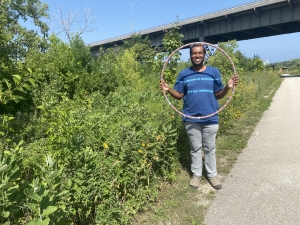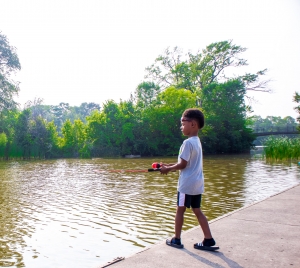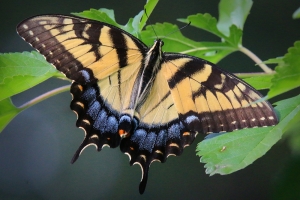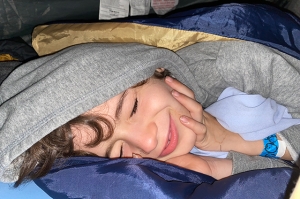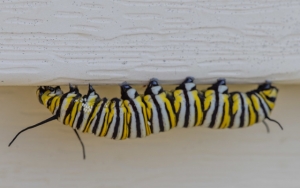
Clare Eigenbrode
Clare Eigenbrode is our 2023 Science Communication Summer intern.
Milkweed and hula hoops with the UEC’s summer 2023 research intern
This summer, I’ve had the honor not only of joining the Urban Ecology Center’s Research and Community Science (RCS) Department as a Science Communication Intern, but also of working alongside my fellow RCS intern, Cameron Brown, while we show new volunteers how to identify an indigo bunting call or a monarch butterfly egg, or when I tag along to help him feed the UEC’s resident snakes and turtles.
Kids, fish, and life lessons at the Washington Park Fishing Club
The first time LaShaun Taylor brought her son and granddaughter to a Fishing Club event at the Urban Ecology Center’s Washington Park branch, her son, who is six, was crestfallen when the outing ended before he was able to catch a fish. That was all forgotten after the family’s second visit when he succeeded in catching and releasing five fish in one afternoon.
UW-Madison grad student teams up with UEC to map species richness and biodiversity in our parks
Lindsey Bereckis, a graduate student in Environmental Conservation at the University of Wisconsin-Madison, is partnering with the Urban Ecology Center this summer to map species richness and biodiversity in the areas surrounding each of our three branches. With mentorship from our Research and Community Science department’s Geographic Information Systems (GIS) & Field Data Coordinator, Amanda Tokuyama, Lindsey has been using a software program called ArcGIS to geospatially visualize data that were collected by community scientists between 2019 and 2023. Lindsey is also comparing data regarding race and median income with biodiversity data for each of the surrounding areas.
The Door to Heaven is Made of Nylon: UEC Community Member Shares her Camping Tales
When her son’s Boy Scouts troop announced that they’d be hosting a camping trip at the Milwaukee County Zoo in early June of this year, Riverwest resident Tanya Wiedenhoeft took some time to warm up to the idea. After all, it felt like it had taken her days to thaw out after her last camping trip a couple of decades earlier. She went with a friend from college, and “we had no gear,” she recalled. “It was so cold. I thought, ‘Oh my god, I never want to do this again.’”
Community Science invaluable to Monarch research
Just after sundown on a recent July evening, I squinted into the blue silhouettes of maple and ash trees at the Urban Ecology Center’s Washington Park branch, where our Research and Community Science Department’s monitoring equipment told us hoary bats (Lasiurus cinereus) and eastern red bats (Lasiurus borealis) were swooping for insects. Officially, I was there to help conduct one of our bat monitoring surveys, but soon I found myself gazing not into the inscrutable night sky but at the lampposts that lined our path below the canopy.
Copyright © 2023 The Urban Ecology Center

